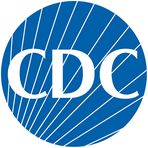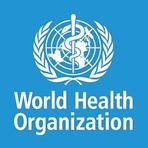Colorado's Measles Case: A Ticking Time Bomb?
April 2, 2025, 9:47 am

Location: United States, Georgia, Atlanta
Employees: 10001+
Founded date: 1946

Location: Switzerland, Geneva, Chambésy
Employees: 5001-10000
Founded date: 1948
In the heart of Colorado, a single measles case has ignited a firestorm of concern. The stakes are high. The state’s health officials are on high alert, watching the ripples of exposure. The question looms: will this spark an outbreak?
Pueblo, a city nestled in the foothills, boasts a vaccination rate of 95% among school-aged children. That’s a solid shield. But the armor is thinner among kindergarteners, where only 84% are fully vaccinated. The surrounding county fares slightly better at 92%. This discrepancy raises eyebrows.
Measles is a silent predator. Symptoms creep in like a thief in the night. Fever, cough, runny nose, and watery eyes emerge about ten days post-exposure. The rash follows, usually two weeks later. In some cases, it can take up to three weeks for the virus to reveal its hand. During this time, infected individuals are contagious. They can spread the virus four days before and four days after the rash appears.
Health officials urge caution. If someone who visited a local deli or clinic develops symptoms, they must call ahead before seeking medical care. This simple act can prevent further spread. Measles can masquerade as a common cold, making it easy to overlook.
As spring break approaches, health experts are pushing for vaccinations. One dose of the measles vaccine reduces the risk of illness by 93%. Two doses ramp that up to 97%. Most people won’t need a booster shot. However, adults vaccinated before 1968 might want to consider one. The vaccine from that era was less effective.
Typically, children receive their first measles shot around one year old, with a second dose before kindergarten. Parents worried about measles should consult their pediatricians. Early vaccination may be necessary for families traveling to outbreak areas.
The Centers for Disease Control and Prevention (CDC) paints a grim picture. As of last Friday, there were 483 reported cases across 19 states. Texas alone accounts for over 80% of U.S. infections this year, with 22 new cases reported recently. The death of a school-aged child in Texas due to measles underscores the virus's deadly potential. An adult in New Mexico also succumbed, though the exact cause remains under investigation.
The World Health Organization has linked some cases in Mexico to the Texas outbreak. However, health officials are still waiting for genetic sequencing from the Colorado patient’s sample. This crucial step will determine if the Colorado case is connected to the Texas outbreak.
Complications from measles are not to be taken lightly. On average, 20% of infected individuals require hospitalization due to pneumonia or other severe complications. The risk escalates for children under five and adults. About one in 1,000 children who contract measles may develop brain swelling, leading to permanent hearing loss or intellectual disability. Pregnant women who are unvaccinated face the risk of premature birth if they contract the virus.
In the midst of this health crisis, U.S. Secretary of Health and Human Services has advocated for vitamin A as a treatment for measles. While vitamin A plays a role in treating hospitalized children, it should not be administered without medical guidance. Excessive amounts can lead to serious health issues, including liver damage and gastrointestinal problems. Pregnant women should be particularly cautious, as high doses can cause birth defects.
The stakes are high, and the clock is ticking. As the situation unfolds, the community must remain vigilant. Vaccination is the best defense against this highly contagious virus. Parents must take action. They must ensure their children are up-to-date on vaccinations.
The path forward is clear. Awareness and education are crucial. Health officials are working tirelessly to inform the public. They are the frontline warriors in this battle against measles.
As spring break approaches, families are urged to prioritize health. Traveling can increase exposure risks. Parents should discuss vaccination options with their pediatricians. The health of the community depends on collective action.
In a world where misinformation spreads like wildfire, clarity is essential. The message is simple: vaccinate. Protect yourself and your loved ones. The threat of measles is real, but it can be mitigated.
The next few weeks will be critical. Will Colorado’s measles case be an isolated incident, or will it ignite a larger outbreak? Only time will tell. But one thing is certain: vigilance is key. The community must stand united against this threat.
In the end, it’s about more than just numbers. It’s about lives. Every child vaccinated is a step toward safety. Every conversation about measles is a chance to educate. The fight against this virus is ongoing, and it requires everyone’s participation.
Stay informed. Stay safe. The health of the community hangs in the balance.
Pueblo, a city nestled in the foothills, boasts a vaccination rate of 95% among school-aged children. That’s a solid shield. But the armor is thinner among kindergarteners, where only 84% are fully vaccinated. The surrounding county fares slightly better at 92%. This discrepancy raises eyebrows.
Measles is a silent predator. Symptoms creep in like a thief in the night. Fever, cough, runny nose, and watery eyes emerge about ten days post-exposure. The rash follows, usually two weeks later. In some cases, it can take up to three weeks for the virus to reveal its hand. During this time, infected individuals are contagious. They can spread the virus four days before and four days after the rash appears.
Health officials urge caution. If someone who visited a local deli or clinic develops symptoms, they must call ahead before seeking medical care. This simple act can prevent further spread. Measles can masquerade as a common cold, making it easy to overlook.
As spring break approaches, health experts are pushing for vaccinations. One dose of the measles vaccine reduces the risk of illness by 93%. Two doses ramp that up to 97%. Most people won’t need a booster shot. However, adults vaccinated before 1968 might want to consider one. The vaccine from that era was less effective.
Typically, children receive their first measles shot around one year old, with a second dose before kindergarten. Parents worried about measles should consult their pediatricians. Early vaccination may be necessary for families traveling to outbreak areas.
The Centers for Disease Control and Prevention (CDC) paints a grim picture. As of last Friday, there were 483 reported cases across 19 states. Texas alone accounts for over 80% of U.S. infections this year, with 22 new cases reported recently. The death of a school-aged child in Texas due to measles underscores the virus's deadly potential. An adult in New Mexico also succumbed, though the exact cause remains under investigation.
The World Health Organization has linked some cases in Mexico to the Texas outbreak. However, health officials are still waiting for genetic sequencing from the Colorado patient’s sample. This crucial step will determine if the Colorado case is connected to the Texas outbreak.
Complications from measles are not to be taken lightly. On average, 20% of infected individuals require hospitalization due to pneumonia or other severe complications. The risk escalates for children under five and adults. About one in 1,000 children who contract measles may develop brain swelling, leading to permanent hearing loss or intellectual disability. Pregnant women who are unvaccinated face the risk of premature birth if they contract the virus.
In the midst of this health crisis, U.S. Secretary of Health and Human Services has advocated for vitamin A as a treatment for measles. While vitamin A plays a role in treating hospitalized children, it should not be administered without medical guidance. Excessive amounts can lead to serious health issues, including liver damage and gastrointestinal problems. Pregnant women should be particularly cautious, as high doses can cause birth defects.
The stakes are high, and the clock is ticking. As the situation unfolds, the community must remain vigilant. Vaccination is the best defense against this highly contagious virus. Parents must take action. They must ensure their children are up-to-date on vaccinations.
The path forward is clear. Awareness and education are crucial. Health officials are working tirelessly to inform the public. They are the frontline warriors in this battle against measles.
As spring break approaches, families are urged to prioritize health. Traveling can increase exposure risks. Parents should discuss vaccination options with their pediatricians. The health of the community depends on collective action.
In a world where misinformation spreads like wildfire, clarity is essential. The message is simple: vaccinate. Protect yourself and your loved ones. The threat of measles is real, but it can be mitigated.
The next few weeks will be critical. Will Colorado’s measles case be an isolated incident, or will it ignite a larger outbreak? Only time will tell. But one thing is certain: vigilance is key. The community must stand united against this threat.
In the end, it’s about more than just numbers. It’s about lives. Every child vaccinated is a step toward safety. Every conversation about measles is a chance to educate. The fight against this virus is ongoing, and it requires everyone’s participation.
Stay informed. Stay safe. The health of the community hangs in the balance.
